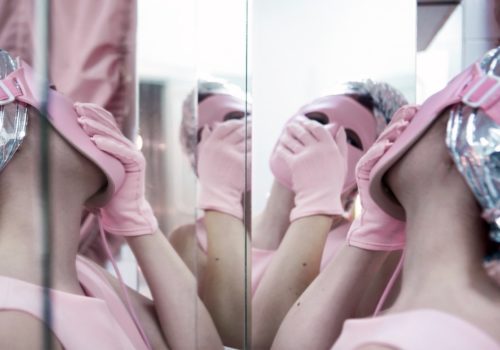How do women photograph women? The feminine gaze is not new in itself but, thanks to social networks in particular, it unquestionably influences our culture and is now a real artistic movement. The English journalist Charlotte Jansen, convinced of photography’s power, has published a book of interviews with women photographers Girl on Girl. The photographs women take of other women are likely to call into question our perceptions, by touching on our world’s invisible structures and so contributing to a wider understanding of society, she writes.
What encouraged you to write this book? What message do you want to convey?
The idea behind my book is observing how women behave differently. We shouldn’t suppose that they have something in common just because they are women – because we have to begin to accept that there is still a lot of prejudice towards women. Certainly this imbalance is being rectified, but the final objective is to go beyond that. There has to be a major change in our way of thinking before we get there, and I think photography can really contribute to that. Of course I have already read, written and reflected on this topic, as an arts and culture journalist, especially with the renewed attention around the new generation of photographers, with artists like Petra Collins and Laurence Philomene. I want to explore their work to see what social impact the “feminine gaze” could have in our visual world. Other artists inspired me as I went along.
Is it easier for women to approach some subjects?
I believe so. Among the forty women I interviewed, many of them confided in me that their models felt more at ease with them. Women more often tend to approach subjects they know personally, their friends or their community, and where there is a certain confidence. Many women photograph themselves to avoid the responsibility or the interaction there is when you take someone’s photo, which seems to me to be very interesting.
In your opinion, can one detect if a photo was taken by a man or a woman? Can we talk about a specific feminine approach or aesthetic?
I think that you can sometimes say explicitly that a woman has taken the photo, particularly photos of women. I think they show women’s bodies differently, they see more possibilities of expression. There is often more complexity in the way women see the body and interpret it. But I don’t think the masculine or the feminine is linked to gender, a woman can photograph in a masculine way, a man could have a feminine aesthetic – we all have both sides. I don’t think there is only one idea of masculine and feminine, either – there’s more than one way of thinking about both. We need to be more united and flexible, and less in opposition. And the feminine eye captures exactly that, it doesn’t show the world in rigid structures. That’s why it’s so exciting.
How do you define the feminine gaze?
For me, the feminine gaze consists of redefining our way of looking at the world. That begins with art and culture, where we can visualise a world that doesn’t exist. Women have the capacity to create an alternative world view. It doesn’t speak only about femininity and feminism, and it’s not only understood by women.
Recorded by Cilou de Bruyn
Cilou De Bruyn is an author and photographic consultant. She lives and works in Brussels in Belgium.
Girl on girl, Art and Photography in the Age of the Female Gaze
By Charlotte Jansen
Published by Laurence King
$29.99
















